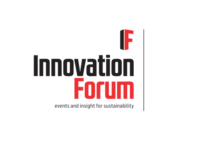A critical transition toward sustainability is being led by business executives, who are at the vanguard of this transformation. The use of environmentally friendly packaging has emerged as an essential component of business responsibility. The implementation of a business model that is based on a circular economy is a strategic need that has the potential to generate long-term value and provide a competitive edge. However, the difficulty may lie in going beyond the traditional timelines and points of view in order to get a more comprehensive perspective and to enhance the effect of the choices that are being made today.
Approaches to design that are circular.
It is necessary to take a strategic approach to design in order to achieve sustainable packaging via circularity. This approach should include rethinking and redesigning things from the ground up.
Among the most important tactics are:
Material Selection: When selecting materials, be sure to choose those that are either recyclable or biodegradable. New opportunities for environmentally friendly packaging solutions have emerged as a result of developments in recycling technology and biomaterials with innovative properties.
The modular design approach involves the creation of packaging that can be readily broken into components that can be recycled. The separation and recovery of materials is made easier as a result of this, which also improves the materials’ capacity to be recycled and reduces contamination.
The implementation of Extended Producer Responsibility (EPR) programs, in which producers are held liable for the whole of the lifespan of their packaging, is recommended. This promotes the creation of packaging that is more easily recyclable and may be used for other purposes.
Circularity advice for executives and business owners
Increasing the sustainability of packaging via circularity requires more than just adopting new materials and designs, according to the executives of those businesses. The implementation of a comprehensive approach that incorporates sustainability into the fundamental business plan is required. Among the essential actions are:
1. Integrate Metrics Regarding Sustainability: It is important to include measures related to sustainability into the processes of product development and innovation. These measurements should represent the environmental, social, and economic implications that are caused by the decisions made about packaging.
2. Participation of Stakeholders: In order to construct a full circular ecosystem, it is necessary to work together with several stakeholders across the value chain. These stakeholders include consumers, recyclers, and suppliers. The process of identifying and overcoming obstacles to circularity requires collaboration as a crucial component.
3. Adopt a lifecycle approach to packaging, taking into consideration the environmental implications at each step, beginning with the extraction of raw materials and continuing all the way through to the conclusion of the product’s existence. By doing so, judgments may be made that are more informed, so reducing the negative effects and increasing constructive contributions.
4. Innovative Business Models: Investigate innovative business models, such as product-as-a-service, which is a paradigm in which packaging is rented rather than sold. Because manufacturers have ownership of the packaging throughout its entire existence, this approach provides an incentive for them to create products that are both long-lasting and highly recyclable.
Circularity’s obstacles being overcome and overcome.
The implementation of a circular packaging idea is a change that is not easy to make. The availability of recycling infrastructure, the complexity of material recovery, and consumer behavior are some of the difficulties that need to be addressed. Additional concerns include the availability of recycling infrastructure.
Nevertheless, these difficulties also create chances for individuals to demonstrate leadership and ingenuity. For instance, establishing a basis for improved decision-making based on holistic data models enhances the capacity to concentrate on efficiently attaining one’s objectives.
The handling of data is another one of the most significant issues that must be overcome. In order for enterprises to successfully manage this current challenge, they need to use sophisticated techniques to recycle content computation. These systems combine data from the whole supply chain, offering extensive insights into each material and component of a product. When it comes to determining the most lucrative trade-offs between recycled content, recyclability, and circularity, this technique helps decision-makers discover the most profitable trade-offs. It also facilitates complicated and detailed life cycle assessments (LCAs). As a consequence of this, producers are able to make choices that are more intelligent and data-driven, which improves both growth and sustainability.
It is necessary for businesses to ask more comprehensive questions about social, environmental, and commercial values at each level, making use of the frameworks that are available, in order to scale up product sustainability. Building connections with both internal and external stakeholders and having a solid understanding of long-term roadmaps are both very important. For the purpose of determining critical design criteria, it is vital to anticipate the market five years in the future, taking into consideration future demand, laws, competition, and social concerns such as carbon or water requirements.
For sustainable packaging, circularity is the way of the future.
The use of circularity in packaging has a number of major strategic benefits, including a reduction in the amount of materials consumed, cost savings, and an improvement in the reputation of the brand. This forward-thinking strategy places firms at the forefront of sustainability, which is particularly important when taking into consideration the dynamic nature of sustainability requirements, which inevitably change over time. It is necessary to look at sustainability in a broader sense than just concentrating on carbon as the main indication. It is vital to use a multi-criteria approach, taking into consideration the consequences for health, the regulatory obligations, and the influence on society. This all-encompassing perspective guarantees that the efforts made toward sustainability are both holistic and successful.
From the point of view of circularity, sustainable packaging is not only a fad; rather, it is an evolution that is required in order to address the urgent environmental concerns that are now being faced.




























